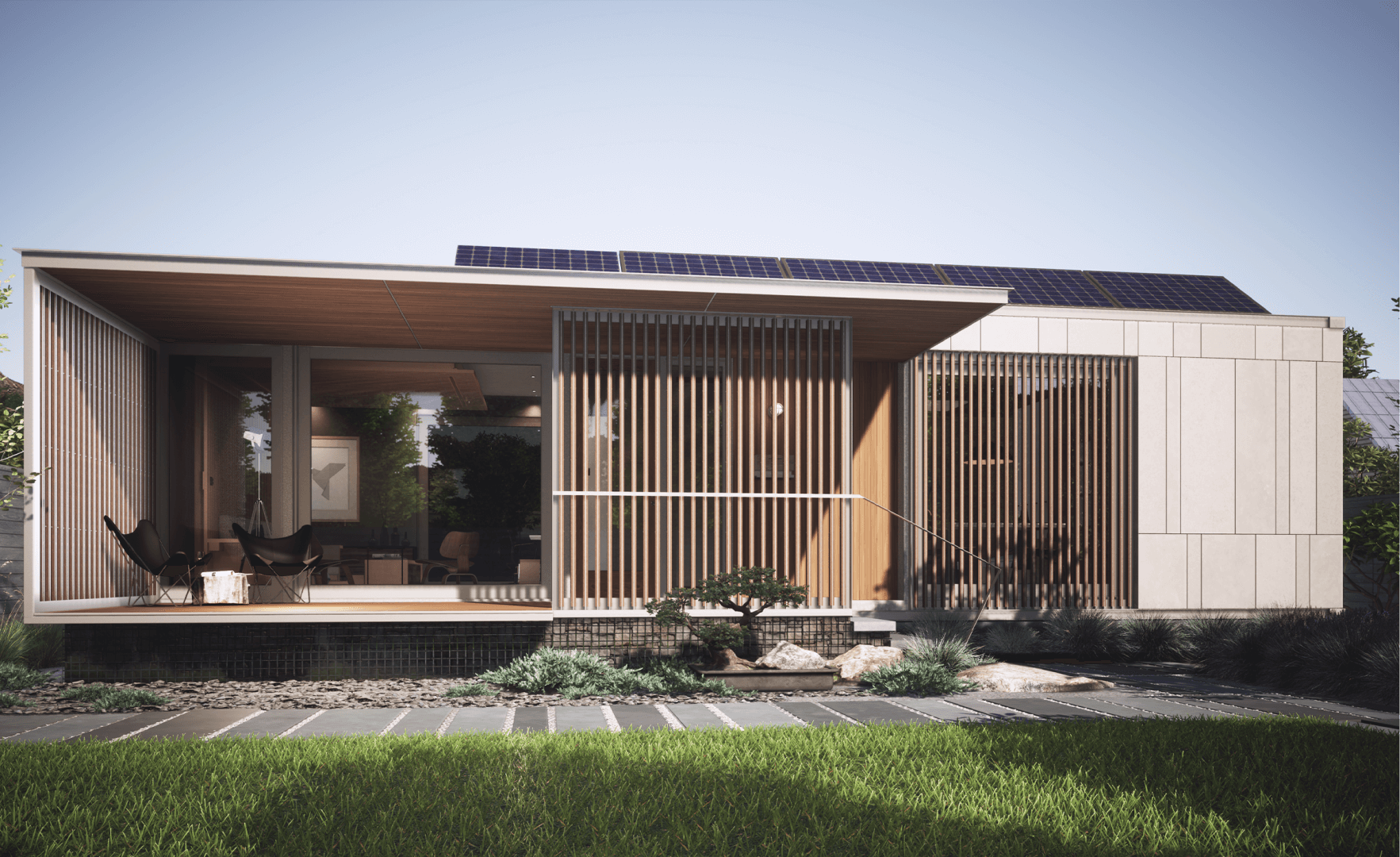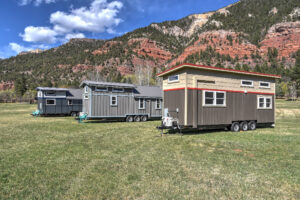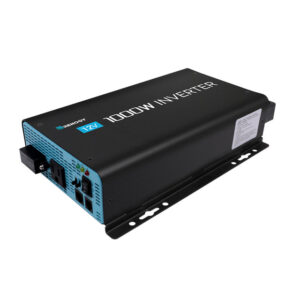
Article-at-a-Glance: Weighing Your Options in Solar Prefab Tiny Homes
-
Discover why solar prefab tiny homes like Zennihome and Boxabl are revolutionizing sustainable living.
-
Uncover the essential features that make Zennihome a standout in the solar prefab market.
-
Get a clear understanding of the costs associated with owning a Zennihome unit.
-
Learn about the environmental and economic advantages of integrating solar power into your home.
-
Compare the pros and cons of Zennihome and Boxabl to make an informed decision for your sustainable lifestyle.
Solar Prefab Living: A Sustainable Choice for Modern Times
Imagine living in a home that not only provides a cozy, personalized space but also treads lightly on the earth. Solar prefab tiny homes are not just a trend; they’re a lifestyle shift towards sustainability. These homes are designed to maximize space efficiency, reduce waste, and harness the power of the sun, making them a smart choice for eco-conscious individuals.
Why Solar Prefab Tiny Homes are Gaining Popularity
-
Affordability: They often cost less than traditional houses, making homeownership more accessible.
-
Eco-Friendly: Solar power slashes electricity bills and carbon footprints.
-
Mobility: Some models can be relocated, offering flexibility in where you live.
-
Speed of Construction: These homes can be set up much faster than building from scratch.
-
Customization: Many prefab homes offer a range of design options to suit different tastes.
With these compelling reasons, it’s no wonder that more people are turning to solar prefab tiny homes as a viable alternative to traditional housing. The blend of modern design, sustainability, and technology appeals to a growing demographic that values both innovation and environmental responsibility.
The Environmental and Economic Benefits of Solar Power Integration
The sun is a powerhouse of energy, and when you integrate solar panels into your home, you’re tapping into a renewable resource that is both abundant and free. This not only has a profound impact on reducing greenhouse gas emissions but also significantly lowers your energy bills. Over time, the initial investment in solar technology pays for itself, and you’re left with a home that’s both cost-effective and kind to the planet.

Spotlight on Zennihome: Innovation Meets Affordability
Zennihome is making waves in the tiny home market with its innovative design that doesn’t compromise on style or functionality. Their solar prefab homes are a testament to the fact that living sustainably doesn’t mean sacrificing comfort or breaking the bank. Let’s dive into what makes Zennihome a game-changer in the world of prefab living.
Core Features of Zennihome Solar Prefab Units
Zennihome’s units are a marvel of modern engineering, boasting features that cater to the eco-conscious homeowner. From the solar panels that adorn the roof to the smart use of space inside, every inch of a Zennihome is designed with purpose and efficiency in mind. Here are some of the standout features:
-
Solar Panels: High-efficiency panels that reduce reliance on the grid and lower energy costs.
-
Insulation: Superior thermal insulation to keep the home warm in winter and cool in summer.
-
Materials: Use of sustainable and recycled materials in construction.
-
Water Conservation: Built-in systems for rainwater collection and greywater reuse.
-
Smart Home Technology: Integration of technology for monitoring and optimizing energy usage.
Cost Analysis: Is Zennihome Economically Viable?
When it comes to the cost of living in a Zennihome, the numbers are promising. The upfront price tag is competitive with traditional housing, but the long-term savings are where you really benefit. With reduced utility bills and minimal maintenance costs, a Zennihome can help you save money while you live comfortably and sustainably. The initial investment includes not only the physical structure but also the peace of mind that comes with a low-impact lifestyle.
Design Aesthetics: How Zennihome Modernizes Tiny Living
Zennihome takes tiny living to the next level with its sleek, minimalist design that maximizes space without compromising on style. The clean lines and modern finishes give a sense of openness, transforming a small footprint into a spacious sanctuary. The thoughtful placement of windows and skylights floods the interior with natural light, creating an airy ambiance that belies the home’s compact size.
The exterior of a Zennihome is just as impressive, with a contemporary facade that stands out in any setting. Whether nestled in a rural landscape or perched in an urban environment, Zennihome’s design aesthetics are a nod to the future of housing—where efficiency, beauty, and sustainability are in perfect harmony.
Advent of Automation: Zennihome’s Smart Tech Integration
In a Zennihome, living smart means more than just energy efficiency—it’s about a home that adapts to your needs. The integration of smart technology allows you to control lighting, temperature, and even security with the touch of a button or the sound of your voice. Automation extends to energy management as well, with systems in place to optimize solar energy use and storage, ensuring that you’re getting the most out of your sustainable investment.
This level of tech integration not only makes daily life more convenient but also future-proofs your home. As technology evolves, so too can your Zennihome, with updates and upgrades that keep your living space at the cutting edge of comfort and sustainability.

Boxabl Unboxed: A New Player in the Solar Prefab Tiny Home Arena
Boxabl is shaking up the prefab industry with its innovative approach to affordable, sustainable housing. Their flagship model, the Casita, is a testament to the company’s commitment to creating homes that are both accessible and environmentally friendly. Let’s explore what sets Boxabl apart from the competition and why it’s becoming a popular choice for those looking to downsize without downgrading.
Unpacking Boxabl’s Key Features and Solar Solutions
Boxabl’s Casita is designed to be a game-changer, offering a range of features that cater to the modern homeowner. The integration of solar panels ensures that your home is not just energy-efficient, but also capable of producing its own clean energy. The Casita’s insulation technology is top-notch, keeping the interior comfortable regardless of the weather outside, while its compact design makes it the perfect solution for those with limited space.
What’s more, Boxabl homes are designed with scalability in mind. The modular nature of their design means that you can start small and expand as needed, all while maintaining a low carbon footprint. This flexibility is a significant draw for those who value both sustainability and adaptability in their living space.
Understanding Boxabl’s Pricing Structure
Affordability is at the heart of Boxabl’s mission, and their pricing structure reflects this. The Casita comes at a price point that challenges the traditional housing market, making it an attractive option for first-time homeowners, downsizers, and eco-conscious buyers alike. The transparent pricing model includes the cost of the unit itself, along with any customization options, making it easy for prospective buyers to understand exactly what they’re getting for their money.
While additional costs such as delivery and site preparation are not included in the base price, Boxabl’s efficiency in manufacturing and construction helps to keep these extra expenses to a minimum. This commitment to affordability without sacrificing quality is what makes Boxabl a standout in the solar prefab space.
Customization Capability: How Boxabl Adapts to Homeowner Needs
Boxabl understands that one size does not fit all when it comes to home design. That’s why they offer a variety of customization options to make each Casita feel like a personalized haven. From interior finishes to layout configurations, homeowners can tailor their Boxabl to reflect their unique style and functional needs.
The customization process is straightforward and user-friendly, allowing buyers to select their preferences during the ordering process. This level of personalization is a significant advantage for those who want a prefab home that doesn’t feel prefabricated.
Evaluating Durability: Assessing Boxabl’s Build Quality
Durability is a crucial consideration for any home, and Boxabl doesn’t cut corners when it comes to build quality. Their homes are constructed with materials that are not only sustainable but also engineered to withstand the rigors of transport and the test of time. The Casita’s steel frame and fire-resistant materials provide peace of mind, while the attention to detail in construction ensures that each home is safe, sturdy, and built to last.
Boxabl’s commitment to durability is further evidenced by their compliance with building codes and standards, ensuring that your investment is not only eco-friendly but also a lasting one. With a Boxabl home, you’re not just buying a place to live—you’re investing in a future that values resilience and sustainability.

Head-to-Head: Zennihome and Boxabl Compared
When it comes to choosing a solar prefab tiny home, the decision often comes down to a comparison of the top contenders. Zennihome and Boxabl are both vying for the spotlight, each with its unique strengths. Let’s put them side by side to see how they stack up in various categories that are crucial for sustainable living.
Comparing Solar Efficiency: Which Home Shines Brighter?
Solar efficiency is paramount in prefab homes, as it directly impacts energy independence and living costs. Zennihome’s solar panels are known for their high efficiency, capable of generating ample power for the home’s needs, with surplus energy often returned to the grid. Boxabl, on the other hand, also offers robust solar solutions, but with slightly less emphasis on energy production. The choice here depends on your energy needs and local climate—Zennihome might edge out if maximum solar generation is your goal.
Space Efficiency: Maximizing Living Area in Limited Footprints
Both Zennihome and Boxabl excel in turning compact spaces into comfortable living areas. Zennihome’s design uses multifunctional furniture and built-ins to make every square inch count. Boxabl’s Casita, with its open floor plan and clever storage solutions, also ensures that you don’t feel cramped, even in a smaller footprint. If you’re looking for ingenious ways to maximize space, both options are on par, offering smart layouts that feel spacious and uncluttered.
Design Flexibility: Zennihome vs. Boxabl in Personalization
Your home should reflect your style, and both Zennihome and Boxabl understand this. Zennihome offers a range of interior options, allowing you to customize finishes and fixtures. Boxabl goes a step further with its modular system that can be configured in various layouts, giving you more control over the design. If personalization is high on your list, Boxabl might have the edge with its customizable modules that can grow with your needs.
Time to Move In: Assessing Setup Speed and Ease
One of the perks of prefab homes is the speed of setup. Zennihome prides itself on quick assembly times, with most units being move-in ready in a matter of weeks. Boxabl matches this promise, with the added benefit of its homes being foldable for transport, potentially reducing setup time even further. For those eager to transition quickly to tiny living, both Zennihome and Boxabl offer swift solutions to get you settled without delay.
Long-Term Value: Considering Depreciation and Lifespan
When investing in a home, it’s essential to think about its long-term value. Zennihome’s use of durable materials and quality construction suggests a longer lifespan, which can mean better value retention. Boxabl also uses high-quality, sustainable materials, ensuring longevity. Both homes are designed to withstand the elements, but Zennihome’s focus on customization and higher-end finishes might give it a slight advantage in maintaining its value over time.
Smart Living: Technological Advancements in Solar Prefab Tiny Homes
The future of tiny living is smart, and both Zennihome and Boxabl are embracing this trend. With features like automated climate control, energy monitoring systems, and smart lighting, these homes are not just shelters—they’re interactive environments that respond to your lifestyle. The integration of technology into every facet of the home not only enhances comfort and convenience but also promotes energy efficiency, which is at the heart of sustainable living.
Integrated Smart Systems for Energy Monitoring and Control
Living in a solar prefab home isn’t just about reducing your carbon footprint; it’s also about embracing the convenience of modern technology. Integrated smart systems are at the forefront of this innovation, providing homeowners with real-time data on energy consumption and production. These systems allow you to monitor your solar panel output, adjust your energy usage, and even sell excess power back to the grid, all from the palm of your hand. This level of control not only saves you money but also ensures that your home is running as efficiently as possible.
Robotics and Furniture: The Future of Compact Living
As we look to the future, the fusion of robotics and furniture in tiny homes is set to redefine space utilization. Imagine a living room that transforms into a bedroom with the press of a button or a desk that folds away when not in use. This isn’t science fiction; it’s the direction in which compact living is headed. Companies are already experimenting with robotic furniture that adapts to your needs, making tiny home living more practical and flexible than ever before.
Choosing Your Tiny Solar Prefab: What to Consider Before Investing
Deciding on a tiny solar prefab home is a significant step towards sustainable living, but there are several factors to consider before making the leap. You’ll want to think about the compatibility of your site, legal requirements, and of course, the financial implications. Let’s explore these considerations to ensure that your investment in a tiny solar prefab home is a sound one.
Assessing Your Site: Compatibility with Solar Prefab Homes
The location of your tiny home is crucial. You’ll need a spot that gets plenty of sunlight to maximize your solar panels’ efficiency. Additionally, the land should be stable and accessible for delivery and setup. Before you commit, have a professional assess the site to ensure it meets the requirements for a solar prefab home, including orientation, soil stability, and access to utilities if needed.
Legal Considerations: Zoning Laws and Building Codes
Navigating the legal landscape is a must. Zoning laws vary widely by location, and it’s essential to know what’s allowed in your area. Some regions have restrictions on the minimum size of dwellings or where they can be placed. Building codes also play a role in ensuring that your home is safe and compliant. Do your homework or consult with a local expert to avoid any legal hurdles down the road.
Financing Your Solar Prefab Tiny Home: Costs and Options
Financing a solar prefab home can be different from a traditional mortgage. Some lenders are still warming up to the idea of tiny homes, so you might need to explore alternative financing options like personal loans or manufacturer financing. Be sure to consider the total cost, which includes the price of the home, land, site preparation, and any additional features or technology you want to include.
FAQs: Your Questions About Solar Prefab Tiny Homes Answered
You’ve got questions, and it’s important to get them answered before you embark on your tiny home journey. Here are some of the most common queries potential homeowners have.
What are the challenges faced in owning a solar prefab tiny home?
Challenges can include finding a suitable location, securing financing, and adapting to a smaller living space. However, proper planning and a willingness to embrace a minimalist lifestyle can turn these challenges into rewarding aspects of tiny home ownership.
What is the average life expectancy of a solar prefab tiny home?
Solar prefab tiny homes, built with durability and efficiency in mind, are designed to stand the test of time. On average, these homes can last 30 years or more with proper maintenance, especially if you take good care of the solar panels and battery systems. Their modular nature also means that parts can be replaced or updated as needed, further extending their lifespan.
How do solar prefab tiny homes impact the environment?
The environmental footprint of solar prefab tiny homes is significantly smaller than that of traditional housing. They use renewable energy, have efficient insulation, and are often made from eco-friendly or recycled materials. By consuming less power and reducing waste, these homes help to minimize the strain on our planet’s resources, paving the way for a more sustainable future.
Can solar prefab tiny homes be expanded or modified?
Yes, the beauty of many solar prefab tiny homes lies in their flexibility. Manufacturers often design these homes with expansion in mind, allowing you to add modules or make modifications as your needs change. It’s a smart idea to discuss these options with your provider before purchase to ensure your home can grow with you.
In conclusion, solar prefab tiny homes offer a unique blend of sustainability, affordability, and modern living. Whether you’re drawn to Zennihome’s innovative designs or Boxabl’s flexible approach, both provide a path to a greener lifestyle without sacrificing comfort or style. As you weigh your options, consider the long-term benefits, the environmental impact, and the joy of living in a home that’s as smart as it is small. Embrace the future of housing with a solar prefab tiny home that reflects your commitment to sustainability and your passion for smart living.



